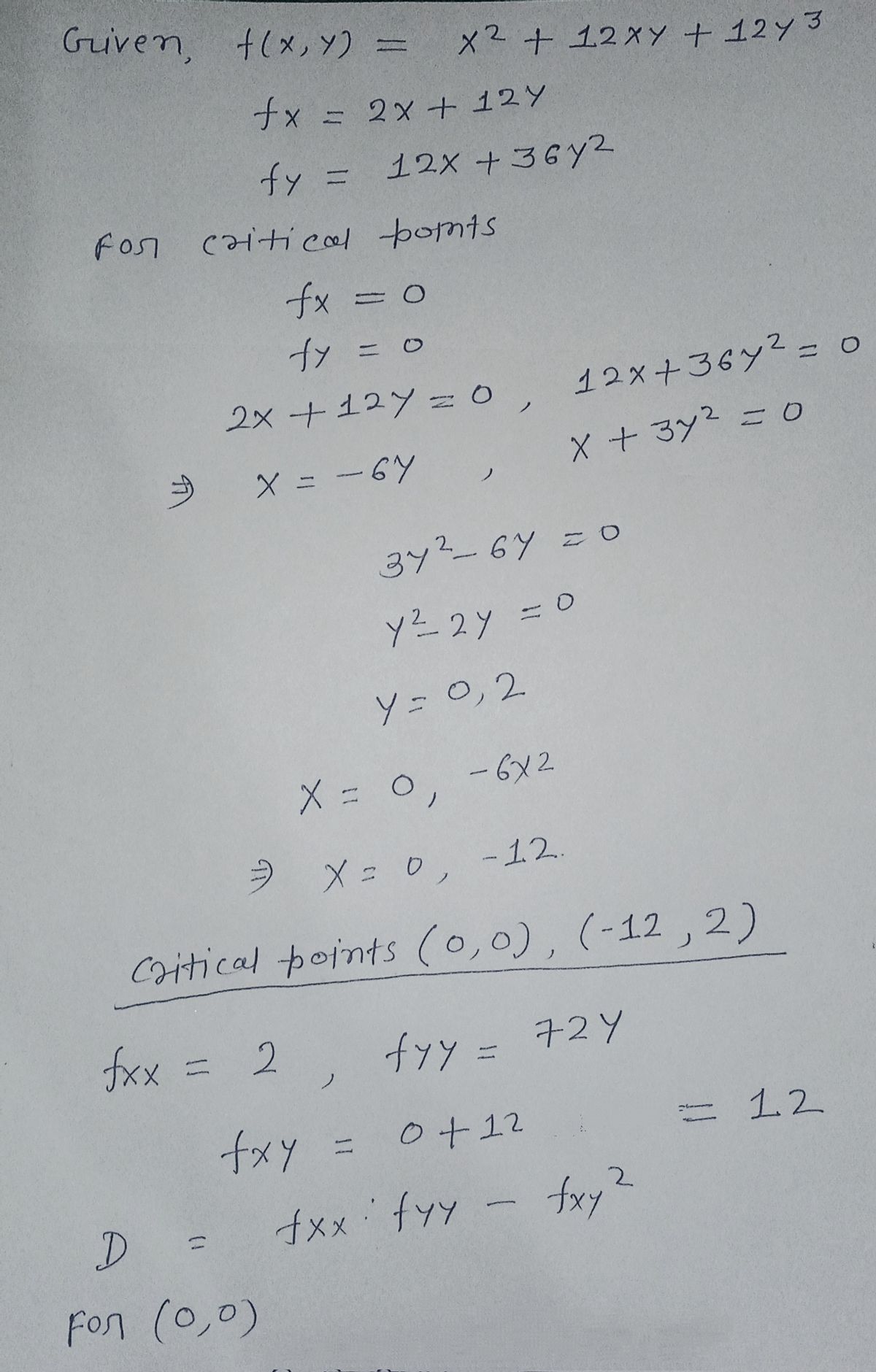Calculus: Early Transcendentals
8th Edition
ISBN:9781285741550
Author:James Stewart
Publisher:James Stewart
Chapter1: Functions And Models
Section: Chapter Questions
Problem 1RCC: (a) What is a function? What are its domain and range? (b) What is the graph of a function? (c) How...
Related questions
Question

Transcribed Image Text:**Problem 3: Critical Values of a Function**
Let \( f(x, y) = x^2 + 12xy + 12y^3 \). Find all the critical values and classify them.
**Solution Steps:**
To find the critical values, we need to determine where the gradient (the vector of first partial derivatives) is equal to zero or is undefined.
1. **Partial Derivatives:**
- Find \( \frac{\partial f}{\partial x} \)
- Find \( \frac{\partial f}{\partial y} \)
2. **Set Partial Derivatives to Zero:**
- Solve \( \frac{\partial f}{\partial x} = 0 \)
- Solve \( \frac{\partial f}{\partial y} = 0 \)
3. **Critical Points:**
- Identify the points \((x, y)\) where both partial derivatives are zero.
4. **Classify Critical Points:**
- Use the second derivative test or Hessian matrix to determine whether each critical point is a local maximum, local minimum, or saddle point.
This approach provides a foundation for analyzing the function and understanding the behavior of \( f(x, y) \) at its critical points.
Expert Solution
Step 1

Step by step
Solved in 2 steps with 2 images

Recommended textbooks for you

Calculus: Early Transcendentals
Calculus
ISBN:
9781285741550
Author:
James Stewart
Publisher:
Cengage Learning

Thomas' Calculus (14th Edition)
Calculus
ISBN:
9780134438986
Author:
Joel R. Hass, Christopher E. Heil, Maurice D. Weir
Publisher:
PEARSON

Calculus: Early Transcendentals (3rd Edition)
Calculus
ISBN:
9780134763644
Author:
William L. Briggs, Lyle Cochran, Bernard Gillett, Eric Schulz
Publisher:
PEARSON

Calculus: Early Transcendentals
Calculus
ISBN:
9781285741550
Author:
James Stewart
Publisher:
Cengage Learning

Thomas' Calculus (14th Edition)
Calculus
ISBN:
9780134438986
Author:
Joel R. Hass, Christopher E. Heil, Maurice D. Weir
Publisher:
PEARSON

Calculus: Early Transcendentals (3rd Edition)
Calculus
ISBN:
9780134763644
Author:
William L. Briggs, Lyle Cochran, Bernard Gillett, Eric Schulz
Publisher:
PEARSON

Calculus: Early Transcendentals
Calculus
ISBN:
9781319050740
Author:
Jon Rogawski, Colin Adams, Robert Franzosa
Publisher:
W. H. Freeman


Calculus: Early Transcendental Functions
Calculus
ISBN:
9781337552516
Author:
Ron Larson, Bruce H. Edwards
Publisher:
Cengage Learning